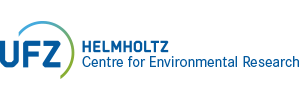Publication Details |
| Category | Text Publication |
| Reference Category | Journals |
| DOI | 10.1016/j.envres.2025.120813 |
| Title (Primary) | Record-setting cyanobacterial bloom in the largest freshwater lake in northern China caused by joint effects of hydrological variations and nutrient enrichment |
| Author | Tao, Y.; Zhang, Y.; Kong, X.; Zhang, S.; Xue, Y.; Ao, W.; Pang, B.; Dou, H.; Xue, B. |
| Source Titel | Environmental Research |
| Year | 2025 |
| Department | SEEFO |
| Volume | 268 |
| Page From | art. 120813 |
| Language | englisch |
| Topic | T5 Future Landscapes |
| Supplements | https://ars.els-cdn.com/content/image/1-s2.0-S0013935125000647-mmc1.docx https://ars.els-cdn.com/content/image/1-s2.0-S0013935125000647-mmc2.xlsx |
| Keywords | Hulun Lake; cyanobacterial blooms; GOTM-WET; water level fluctuations; early warning signal |
| Abstract | Cyanobacterial
blooms represent a significant environmental issue posing widespread
threats to global aquatic ecological health. Climate and nutrient
enrichment were the most studied factors modulating cyanobacterial
blooms in eutrophic lakes. However, in many floodplain lakes, the
importance of hydrological variation in driving and predicting
cyanobacterial blooms is often overlooked and largely underestimated,
which has hampered the effectiveness of lake management. Here, we use a
process-based lake ecosystem model (GOTM-WET) to evaluate the potential
drivers of the record-setting cyanobacterial bloom during summer 2022
(>70% of lake area) in the largest shallow lake in Northern China
(Hulun Lake). The model was calibrated based on a comprehensive field
dataset including both remote sensing (surface water temperature) and
in-lake observations (water quality). We performed a scenario analysis
with various combinations of nutrient loading, hydrological variations
and climate change. Our modeling results unravel that the profound water
level rise through 2021 to 2022 serves as the main trigger of the
severe cyanobacterial bloom in summer 2022, whereas climate factors
demonstrate marginal impacts. Our model predicted a decrease of 60.5% in
the annual average of cyanobacterial biomass when water level remained
stable. In addition, both water level change and nutrient concentration
explains 72.5% of the variance in long-term maximum area of
cyanobacterial blooms. Our model further reveals that the water level rise drives the cyanobacterial bloom via bringring in excessive nutrient to lake water column from the lake basin. Thus, our results suggest that continuous increase in water level across two years could serve as an early warning signal to cyanobacterial blooms in the consecutive summer. Our findings may be applicable to similar temperate shallow lakes in floodplain areas, especially for those located in agricultural and pasture regions with abundant nutrient legacy, thus may provide a new indicator for cyanobacterial blooms prediction. |
| Persistent UFZ Identifier | https://www.ufz.de/index.php?en=20939&ufzPublicationIdentifier=30325 |
| Tao, Y., Zhang, Y., Kong, X., Zhang, S., Xue, Y., Ao, W., Pang, B., Dou, H., Xue, B. (2025): Record-setting cyanobacterial bloom in the largest freshwater lake in northern China caused by joint effects of hydrological variations and nutrient enrichment Environ. Res. 268 , art. 120813 10.1016/j.envres.2025.120813 |
|
